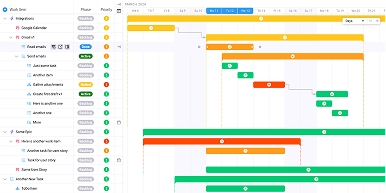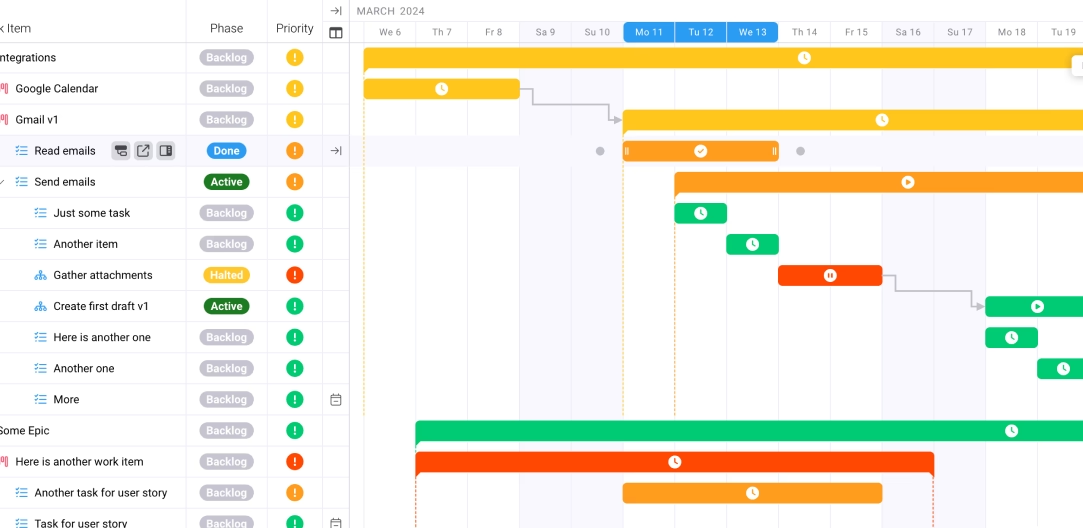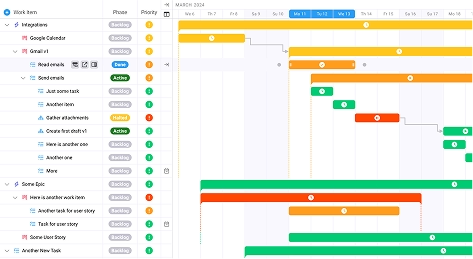
Client Retention Mastery: How Top Agencies Keep Clients for Years (Not Months)
Key takeaways:
- Financial Impact: Improving client retention by just 5% can boost agency profits by up to 95%, making it far more cost-effective than acquisition
- Industry Reality: Most agencies experience dangerous churn rates, with healthy agencies maintaining below 5% annual churn versus the 20%+ many currently face
- Strategic Advantage: Agencies with strong retention create predictable revenue streams, reduce acquisition costs, and build powerful referral engines
- Implementation Framework: Success requires systematic onboarding, proactive communication, continuous value delivery, and data-driven retention strategies
The harsh reality hitting agency leaders worldwide? 97% of top PR agencies achieve excellent retention rates, while most agencies struggle to keep clients beyond 18 months. If your agency is trapped in the exhausting cycle of constantly replacing departing clients, you’re fighting an uphill battle that’s draining both your resources and your team’s morale. Client retention isn’t just a nice-to-have metric—it’s the foundation that separates thriving agencies from those barely surviving.
The Current Challenge – What’s Broken in Agency Client Retention
The agency landscape has become a battlefield where only 65 out of 100 customers stay with a company on average, and the statistics for agencies are even more sobering. The fundamental problem isn’t that clients are unreasonable or disloyal—it’s that most agencies approach client relationships with a project mindset rather than a partnership philosophy.
Consider this stark reality: only 40 percent of companies and 30 percent of agencies are equally focused on retaining customers and acquiring new ones. This misalignment of priorities creates a vicious cycle where agencies spend enormous resources acquiring new clients while neglecting the ones paying their bills today.
The modern agency environment presents unique retention challenges that didn’t exist a decade ago. 78% of marketers plan to hold an agency review in 2025, meaning nearly four out of five client relationships are potentially at risk. This review culture has created an environment where clients constantly evaluate their agency partnerships, making retention more critical than ever.
Perhaps most concerning is the financial reality agencies face. Customer acquisition costs have risen nearly 222 percent since 2013, while customer acquisition costs have skyrocketed by 60% over the last five years. These escalating costs make the traditional “churn and replace” model financially unsustainable.
The root causes of poor retention often trace back to three critical failures: inadequate onboarding processes that fail to set proper expectations, reactive rather than proactive account management, and a lack of systematic approaches to demonstrating ongoing value. Many agencies inadvertently train clients to focus on deliverables rather than outcomes, commoditizing their services and making price the primary differentiator.
The Strategic Framework – Building Retention-Centered Operations
Transforming your agency into a retention powerhouse requires fundamentally rethinking how you structure client relationships. The most successful agencies operate on what we call the “Partnership Pyramid” – a framework that builds sustainable client relationships through four foundational levels.
Level 1: Foundation Setting Every lasting client relationship begins with crystal-clear expectation setting during the initial engagement. This isn’t about over-promising to win business; it’s about creating detailed mutual understanding of deliverables, timelines, communication protocols, and success metrics. Top agencies invest heavily in their onboarding process, treating it as the foundation for everything that follows.
Level 2: Value Demonstration The second level focuses on consistent, measurable value delivery that goes beyond basic service provision. This means implementing robust reporting systems, creating custom dashboards that matter to each client, and establishing regular check-ins that proactively address concerns before they escalate into problems.
Level 3: Strategic Integration At this level, your agency becomes embedded in the client’s strategic thinking rather than functioning as a vendor. You’re invited to planning sessions, consulted on major decisions, and viewed as an extension of their internal team. This integration creates natural switching costs that significantly improve retention.
Level 4: Growth Partnership The highest level transforms the agency-client relationship into a true growth partnership. Here, your success directly correlates with their success, creating aligned incentives and mutual investment in long-term outcomes.
The framework requires agencies to shift from transactional thinking to relationship thinking. Instead of focusing solely on project completion, retention-focused agencies prioritize relationship health, client satisfaction, and long-term value creation.
This strategic approach recognizes that a 5% increase in retention rates could potentially boost profits by 25% to 95%, making retention optimization one of the highest-ROI activities an agency can pursue.
Implementation Tactics – Five Proven Strategies for Long-Term Client Loyalty
1. Master the Critical First 90 Days
The onboarding period represents your highest-leverage opportunity to set the trajectory for the entire client relationship. Research consistently shows that client satisfaction during the first 90 days predicts long-term retention more accurately than any other factor.
Create a structured 90-day onboarding journey that includes weekly check-ins, monthly strategy reviews, and clearly defined milestones. During this period, over-communicate rather than under-communicate. Clients who feel informed and involved during onboarding develop higher trust levels and more realistic expectations.
Implement a formal kickoff process that involves key stakeholders from both organizations. This isn’t just a project meeting—it’s a relationship-building session that establishes personal connections between teams. Strong interpersonal relationships create emotional switching costs that purely professional relationships cannot match.
2. Implement Proactive Account Management
The difference between reactive and proactive account management often determines retention outcomes. Reactive agencies respond to client requests and concerns after they arise. Proactive agencies anticipate needs, identify opportunities, and address potential issues before clients recognize them.
Establish monthly business reviews that go beyond project updates to explore the client’s evolving business landscape. Use these sessions to identify new opportunities, discuss industry trends, and position your agency as a strategic advisor rather than a service provider.
Create account health scoring systems that track multiple retention indicators: project satisfaction scores, communication frequency, payment patterns, and engagement levels. When scores indicate declining account health, implement immediate intervention protocols before the relationship deteriorates further.
3. Build Continuous Value Recognition Systems
Many agencies deliver excellent work but fail at value communication. Clients who don’t clearly understand your impact are prime candidates for churn, regardless of your actual performance quality.
Develop customized reporting dashboards that translate your work into business outcomes the client cares about. If you’re managing their social media, don’t just report engagement metrics—show how increased engagement correlates with website traffic, lead generation, or brand awareness improvements.
Implement quarterly business impact reports that aggregate your various activities into a comprehensive value story. These reports should quantify your contribution to their business goals and position your agency as a revenue driver rather than a cost center.
4. Create Strategic Expansion Opportunities
The strongest client relationships naturally expand over time as trust builds and additional needs emerge. However, expansion doesn’t happen accidentally—it requires systematic cultivation and positioning.
Conduct annual strategy sessions focused entirely on the client’s business goals for the coming year. Use these sessions to identify services gaps where your agency could provide additional value. Position expansion opportunities as natural evolution rather than aggressive sales tactics.
Develop service bundling strategies that provide more comprehensive solutions while creating deeper integration points. When clients rely on you for multiple critical functions, switching becomes significantly more complex and risky.
5. Foster Executive-Level Relationships
Account managers build working relationships, but executive sponsors create strategic partnerships. Ensure your agency leadership maintains regular contact with client executives, particularly during positive moments when relationships are strong.
Schedule quarterly executive briefings that focus on strategic insights rather than operational updates. Share industry intelligence, competitive analysis, and market trends that help client executives make better business decisions.
Create informal networking opportunities like industry events, executive dinners, or exclusive briefings that strengthen personal relationships between leadership teams.
Measuring Success – KPIs and Metrics That Matter
Effective client retention requires systematic measurement of both leading and lagging indicators. While ultimate retention rates provide historical insight, leading indicators help predict and prevent churn before it occurs.
Core Retention Metrics: Track your annual client retention rate, but segment it by client size, service type, and tenure length. The majority of agencies experienced a churn rate between 2% and 8%, but a healthy churn rate for agencies stays below 5% annually. Understanding that at retainer-oriented agencies, client turnover higher than 20% should be concerning helps establish appropriate benchmarks.
Account Health Indicators: Develop composite scores that include project satisfaction ratings, communication frequency metrics, payment promptness, and engagement levels in strategic conversations. These leading indicators often predict retention outcomes 3-6 months in advance.
Value Recognition Metrics: Track whether clients can articulate your value proposition, reference your work in their internal meetings, and proactively seek your input on strategic decisions. These qualitative indicators often precede quantitative retention improvements.
Financial Health Metrics: Monitor client lifetime value trends, average account size progression, and service expansion rates. 34% of agencies report that they typically retain clients for a period of between 2 and 5 years, providing a benchmark for relationship longevity expectations.
The most successful agencies track retention metrics monthly, not quarterly or annually. This frequency enables rapid intervention when accounts show early warning signs of potential churn.
Benchmark Your Performance: Industry leaders achieve significantly better retention rates than average performers. Media and Professional Services have an 84% retention rate, setting a high bar for agency performance. Companies that prioritize retention consistently outperform those focused primarily on acquisition, with 84% of companies that work to improve customer experience notice an uplift in revenue.
Future Considerations – Emerging Trends and Next Steps
The agency landscape continues evolving rapidly, creating new retention challenges and opportunities. Understanding these trends helps forward-thinking agencies position themselves for sustained client retention success.
Technology-Enabled Retention: Artificial intelligence and automation tools increasingly enable more sophisticated account health monitoring and predictive churn modeling. Agencies investing in these technologies gain significant advantages in early problem identification and intervention.
Outcome-Based Relationships: The future belongs to agencies that can tie their compensation directly to client business outcomes rather than activity-based billing. This alignment creates natural retention incentives and positions agencies as true business partners.
Specialization Premium: As markets become more competitive, specialized agencies with deep industry expertise achieve higher retention rates than generalists. Clients value domain knowledge and industry-specific insights that generic agencies cannot provide.
Remote Relationship Management: The shift toward distributed work models requires agencies to develop new relationship-building strategies that don’t rely on face-to-face interactions. Successful agencies invest in virtual relationship technologies and structured remote engagement processes.
The agencies that thrive in this evolving landscape will be those that recognize client retention as their primary competitive advantage. Remember, getting a new consumer can cost up to five times more than keeping an existing one, making retention optimization one of the highest-leverage activities an agency can pursue.
Taking Action: Start by conducting a comprehensive audit of your current retention practices using the framework outlined in this article. Identify your biggest retention gaps and implement systematic improvements over the next 90 days. The investment in retention-focused operations pays dividends for years, creating the stable foundation every successful agency needs.
Client retention mastery isn’t just about keeping existing clients—it’s about building an agency that clients never want to leave. When you achieve this level of client portal excellence combined with superior project management capabilities, you create an unstoppable foundation for sustainable agency growth. The choice is clear: continue the exhausting cycle of constant client replacement, or build the retention systems that transform your agency into a client magnet that retains relationships for years, not months.
Frequently Asked Questions
What is a good client retention rate for marketing agencies?
A healthy retention rate for marketing agencies should stay below 5% annual churn, meaning 95%+ client retention. Top-performing agencies often achieve retention rates above 90%, while concerning performance typically shows churn rates above 20% annually.
How much does it cost to acquire a new client versus retaining an existing one?
Acquiring new clients typically costs 5-25 times more than retaining existing ones, with customer acquisition costs having risen over 200% since 2013. This makes retention strategies significantly more cost-effective than acquisition-focused approaches.
What are the biggest factors that cause clients to leave agencies?
The primary factors include poor communication, failure to demonstrate measurable value, misaligned expectations, lack of strategic input, and reactive rather than proactive account management. Many clients also leave due to feeling like vendors rather than partners.
How long should agencies expect to retain clients on average?
Industry data shows that 34% of agencies retain clients for 2-5 years, while top performers achieve relationships lasting 5+ years. The average agency-client relationship lasts 2-3 years, but this varies significantly based on service type and relationship quality.
What’s the difference between retention strategies for retainer vs project-based clients?
Retainer-based relationships require continuous value demonstration and strategic integration, while project-based retention focuses on creating repeat engagement opportunities and expanding service scope over time through exceptional project delivery.
How can agencies measure account health before clients decide to leave?
Implement composite scoring systems tracking project satisfaction, communication frequency, payment patterns, strategic engagement levels, and value recognition indicators. These leading metrics often predict retention outcomes 3-6 months in advance.
What role does onboarding play in long-term client retention?
The first 90 days critically determine relationship trajectory, with strong onboarding processes significantly improving retention rates. Effective onboarding sets proper expectations, builds trust, and establishes communication protocols for the entire relationship.
How should agencies price services to improve retention?
Consider outcome-based pricing models that align agency success with client results, create service bundles that increase switching costs, and focus on value-based rather than time-based pricing structures to position the agency as a strategic investment.









